**Shingle oak
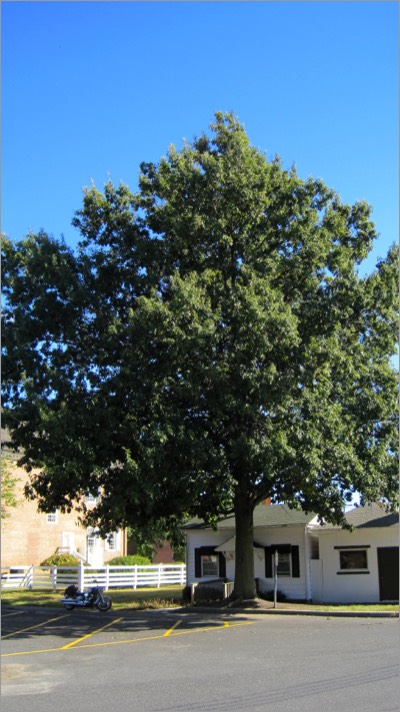
This shingle oak was planted ca 1969 (east of the Washington Building; map coordinates S-13).
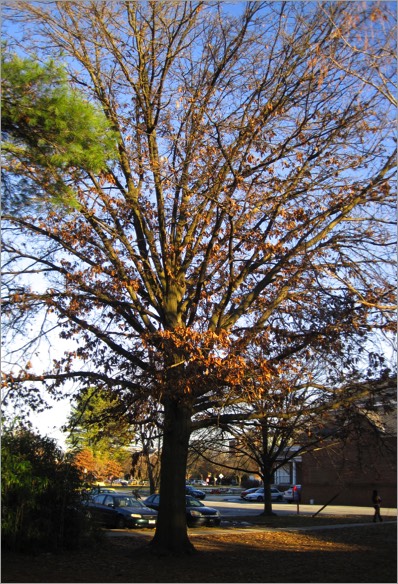
This shingle oak is a State Record tree, the second largest of its species in Delaware
(map coordinates O-13; east of Baker Building).
**Quercus imbricaria
SHINGLE OAK
Fagaceae
E. North America
Locations: map coordinates:
O-13 (east of Baker Building), N 39°11'9'' W 75°32'43''; and
S-13 (east of Washington Building), N 39°11'7'' W 75°32'44''
Planting history:
O-13: probably planted by Dr. N. Dill, 1960’s-1970’s. This tree is a State Record tree, the 2nd-largest shingle oak in Delaware: height 67 feet, circumference (cbh) 93 inches (= diameter [dbh] 29.6 inches) (Big Trees of Delaware, 2012.
S-13: planted by Dr. U. Washington and Dr. N. Dill, ca 1969.
Description:
**Adventive species (not native to Delaware, but native to N. America and now growing wild in Delaware) in New Castle County piedmont
SHINGLE OAK
Fagaceae
E. North America
Locations: map coordinates:
O-13 (east of Baker Building), N 39°11'9'' W 75°32'43''; and
S-13 (east of Washington Building), N 39°11'7'' W 75°32'44''
Planting history:
O-13: probably planted by Dr. N. Dill, 1960’s-1970’s. This tree is a State Record tree, the 2nd-largest shingle oak in Delaware: height 67 feet, circumference (cbh) 93 inches (= diameter [dbh] 29.6 inches) (Big Trees of Delaware, 2012.
S-13: planted by Dr. U. Washington and Dr. N. Dill, ca 1969.
Description:
- large deciduous tree
- etymology: Quercus = the Latin name; imbricaria from Latin imbrex = tile, wood was used for roof tiles
- the common name is derived from the former use of the wood to make shingles
- leaves simple, alternate; without lobes or teeth (unusual for our oaks); shiny above, densely hairy beneath
- monoecious (separate male and female flowers on same tree); flowers tiny; male flowers in drooping catkins, female flowers inconspicuous
- fruit is an acorn (develops from ovary of female flower)
- in the “red/black oak group”: leaf lobe with bristle-tip (single, terminal bristle-tip in this species); acorn matures in 2 years, relatively bitter and inedible unless processed
- end buds clustered (typical of oaks)
- mostly mid-Western; native in mountains and piedmont from Pennsylvania and south
- cultivated species, escaping to fields in Delaware
**Adventive species (not native to Delaware, but native to N. America and now growing wild in Delaware) in New Castle County piedmont
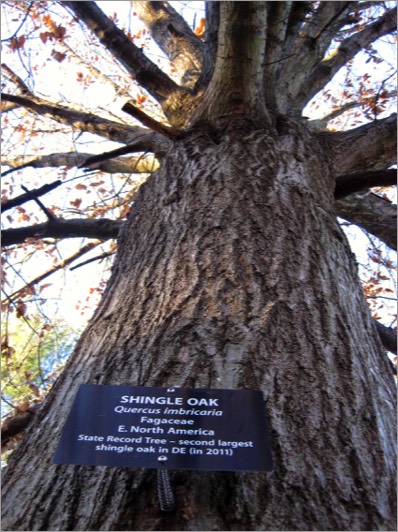
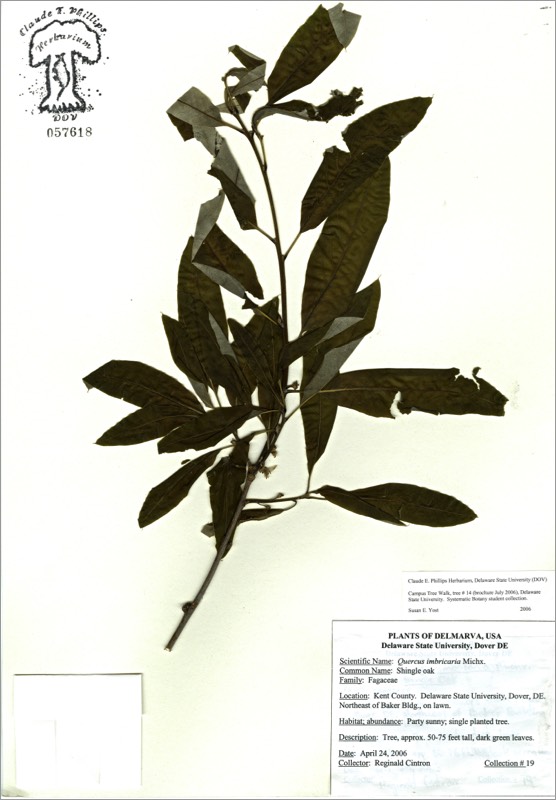
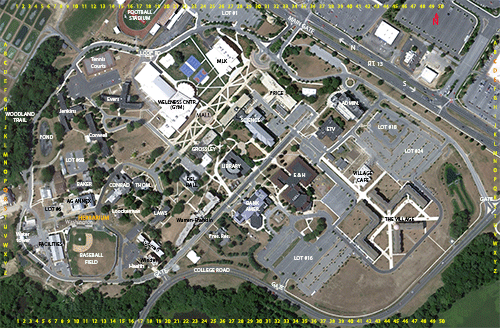
There are 2 labeled shingle oak trees.
HIT REFRESH TO START LOCATION GRAPHIC